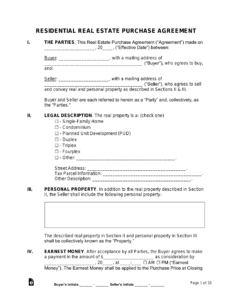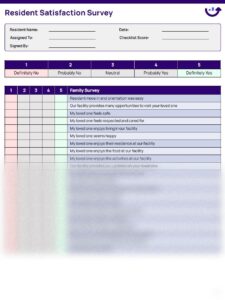Ever wondered how well your residential building is truly running? The unsung hero behind the scenes, your building superintendent, plays a crucial role in the daily lives of residents, property value, and overall building harmony. They are often the first point of contact for issues, the last line of defense for emergencies, and the consistent face of your property management. Understanding their performance, challenges, and successes is vital for a smoothly operating community.
That’s where a comprehensive survey comes in. By gathering feedback, property managers, co-op boards, and condo associations can gain invaluable insights into operational efficiencies, resident satisfaction levels, and areas ripe for improvement. It’s not just about pointing out flaws; it’s about recognizing strengths and empowering your super to do their best work, ultimately enhancing the living experience for everyone. Let’s explore how you can build an effective tool to achieve just that.
The Indispensable Value of a Superintendent Survey
Implementing a regular survey for your residential building superintendent offers a treasure trove of benefits that extend far beyond simple performance reviews. It’s a proactive step towards fostering a more efficient, responsive, and harmonious living environment. Think of it as a direct line to understanding the pulse of your building’s operational health from various perspectives – residents, management, and even the super themselves. This feedback mechanism provides a structured way to identify what’s working well and what might need a little attention.
One of the primary advantages is improved communication. Oftentimes, issues might simmer below the surface, or positive efforts might go unnoticed. A survey opens up channels for residents to voice concerns or praise in a constructive manner, while also allowing management to identify patterns or recurring problems. This collective feedback helps in prioritizing maintenance needs, addressing resident complaints promptly, and ensuring that the superintendent’s efforts are aligned with the community’s expectations. It transforms anecdotal evidence into actionable data.
Furthermore, these surveys are powerful tools for professional development. By highlighting areas where additional training or resources might be beneficial, you’re not just criticizing; you’re investing in your superintendent’s growth. Perhaps they excel at technical repairs but could use support in resident communication, or vice versa. The insights gained from a well-structured residential building superintendent survey template can lead to targeted training programs that boost morale, improve skills, and ultimately enhance the quality of service provided to residents.
Ultimately, a robust feedback system strengthens the relationship between residents, management, and the superintendent. It demonstrates that all voices are valued and that there’s a commitment to continuous improvement. This fosters a sense of community and trust, which are priceless assets for any residential property. When everyone feels heard and improvements are visibly made, it contributes significantly to overall resident satisfaction and retention.
Key Areas to Cover in Your Superintendent Survey
- Responsiveness and Accessibility: How quickly does the superintendent address issues? Are they easy to reach when needed?
- Maintenance and Repairs: Is work done efficiently, effectively, and to a high standard? Is the building kept clean and well-maintained?
- Communication Skills: Do they communicate clearly, respectfully, and proactively about building matters?
- Problem-Solving Ability: How well do they handle difficult situations or unexpected emergencies?
- Resident Relations: Are they approachable, friendly, and helpful to residents? Do they foster a positive atmosphere?
- Safety and Security: Do they ensure common areas are safe, and do they respond appropriately to security concerns?
- Overall Professionalism: Do they present themselves professionally and uphold building standards?
Designing and Utilizing Your Residential Building Superintendent Survey Template
Crafting an effective residential building superintendent survey template requires careful thought to ensure you gather meaningful and actionable insights. It’s not just about asking questions, but asking the *right* questions in a way that encourages honest and constructive feedback. Begin by defining your objectives: what exactly do you hope to learn? Are you looking to assess overall performance, identify specific operational challenges, or gather input for future improvements? Your objectives will guide the types of questions you include and the format they take.
When designing your survey, consider a mix of question types. Rating scales (e.g., 1-5, poor to excellent) are great for quantitative data, allowing you to easily track trends and compare performance over time. However, don’t shy away from open-ended questions. These qualitative responses provide rich, nuanced feedback that can explain the “why” behind the ratings. For example, instead of just asking “Was the repair done well?”, ask “Please describe your experience with the recent repair and suggest any improvements.” This balance ensures you get both measurable data and valuable context.
Distributing the survey effectively is just as crucial as its design. Make it easy for residents to participate. Online platforms are often preferred for their convenience and anonymity, but physical copies should also be available for those who prefer them. Ensure clear communication about the survey’s purpose, how long it will take, and most importantly, how the feedback will be used. Emphasize that responses are confidential to encourage candidness. Set a reasonable deadline for submission and send gentle reminders.
Once the responses are collected, the real work begins: analyzing the data and taking action. Look for patterns, recurring themes, and significant outliers. Don’t just focus on negative feedback; celebrate areas of excellence too. Share a summary of the findings with residents and, most importantly, with the superintendent. Use the insights to develop an action plan: address identified weaknesses, provide necessary resources or training, and acknowledge strengths. Remember, a survey is only valuable if its results lead to tangible improvements that benefit the entire community.
- Keep it concise: Respect participants’ time; shorter surveys generally have higher completion rates.
- Ensure anonymity: This is paramount for honest feedback.
- Use clear, unambiguous language: Avoid jargon or leading questions.
- Test the survey: Have a small group of people complete it before a full rollout to catch any issues.
- Provide an “N/A” option: Not every resident will have experienced every aspect of the super’s work.
- Follow up: Communicate what actions will be taken based on the feedback.
Implementing a thoughtful feedback process for your building’s cornerstone professional isn’t just a good idea; it’s a strategic move for any property looking to thrive. It empowers property managers and boards with the data needed to make informed decisions, improve services, and foster a truly connected community. By regularly checking in on this vital role, you ensure that your building remains a desirable and well-managed place to live.
The insights gleaned from such an exercise can pinpoint areas for growth, highlight exceptional performance, and ultimately contribute to a more efficient and harmonious living environment for everyone involved. Investing in this kind of structured feedback loop means investing in the long-term health and satisfaction of your residential property, leading to happier residents and a more effective team.


